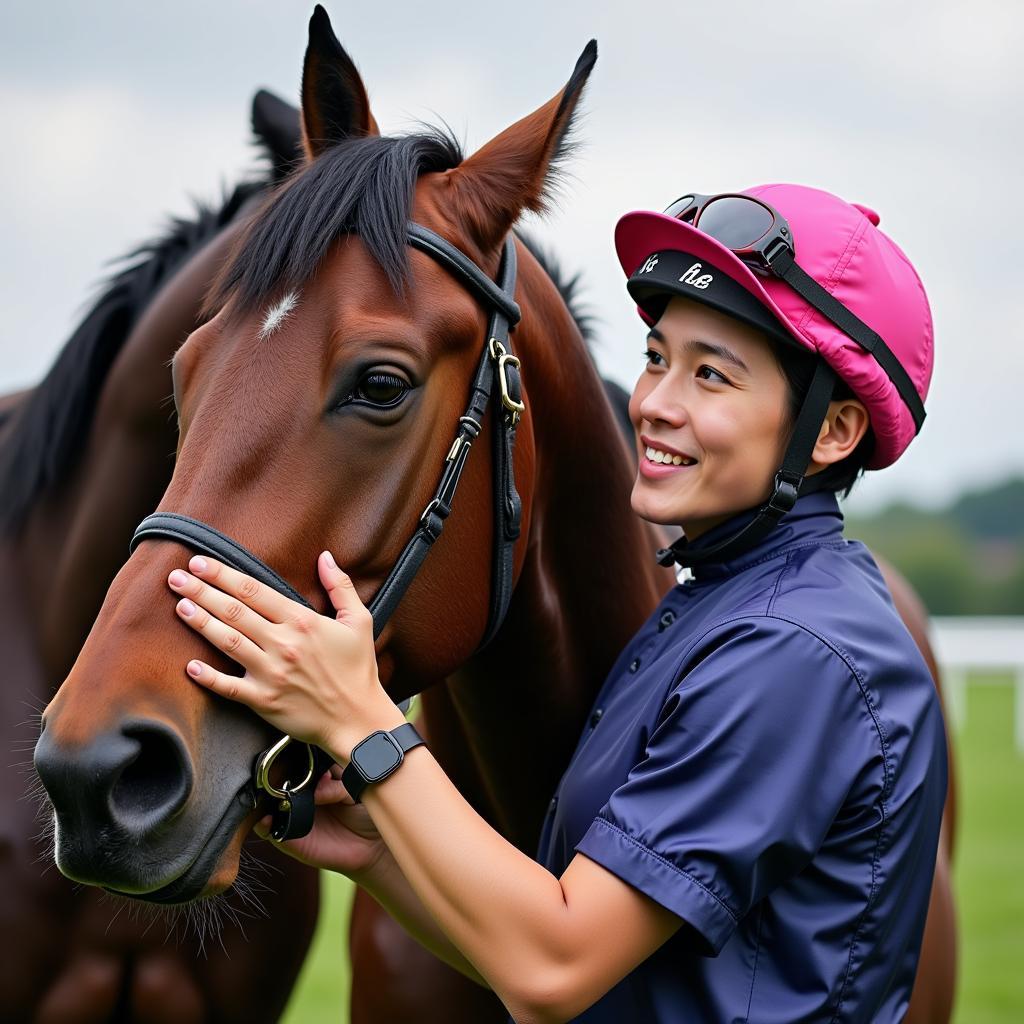Htr Horse Racing is a captivating world, blending the thrill of competition with the majesty of these powerful animals. This guide delves into the intricacies of HTR, offering insights into its various aspects, from understanding the different types of races to responsible horse care. Whether you’re a seasoned bettor or a curious newcomer, this guide aims to provide a comprehensive understanding of HTR horse racing.
Understanding the Basics of HTR Horse Racing
HTR likely refers to a specific type of horse racing, perhaps a specific track, organization, or even a data-driven rating system. While the exact meaning of the acronym remains unclear without further context, we can still explore the fundamental elements of horse racing that are likely relevant to HTR. These core principles apply regardless of the specific type of racing being referenced.
Horse racing involves different breeds, each with its own strengths and weaknesses. Thoroughbreds are known for their speed and stamina, making them popular in flat racing. Quarter Horses excel in short bursts of speed, dominating in quarter-mile races. Understanding these breed distinctions is crucial for analyzing HTR horse racing performance.
Different race formats exist within HTR horse racing, each requiring unique strategies and skills from both horse and jockey. Flat racing tests speed and endurance over varying distances, while jump racing introduces obstacles that demand agility and jumping prowess. Harness racing sees horses pulling a two-wheeled cart (sulky), focusing on pacing or trotting gaits. Familiarizing yourself with these formats provides a deeper appreciation for the complexities of HTR.
 Thoroughbred Horses at the Starting Gate
Thoroughbred Horses at the Starting Gate
Factors Influencing HTR Horse Racing Outcomes
Several factors contribute to a horse’s performance in HTR horse racing, making it more than just a test of speed. The jockey’s skill and experience play a vital role in guiding the horse and making strategic decisions during the race. Track conditions, including the surface type and weather, can significantly impact a horse’s footing and overall performance. Finally, the horse’s training regimen and overall health are paramount, as a well-conditioned horse is more likely to perform at its peak.
Understanding these influencing factors is essential for anyone involved in HTR horse racing, from owners and trainers to bettors. Analyzing these elements can provide valuable insights into predicting race outcomes and making informed decisions.
“A successful racehorse is a product of meticulous training, a skilled jockey, and a little bit of luck,” says renowned equine veterinarian Dr. Amelia Hernandez. “Every detail matters, from the horse’s diet to the condition of the track.”
The Importance of Responsible Horse Care in HTR
Ethical considerations in HTR horse racing are paramount. Ensuring the well-being of these magnificent animals should always be the top priority. Providing proper nutrition, veterinary care, and adequate rest are fundamental to responsible horse ownership. Recognizing and addressing signs of stress or injury is equally crucial. Furthermore, promoting responsible breeding practices contributes to the long-term health and sustainability of the horse racing industry.
 Jockey and Horse After Race
Jockey and Horse After Race
“The welfare of the horse should always come first,” emphasizes Dr. Hernandez. “Responsible horse care is not just ethical, it’s essential for the long-term success of the sport.”
HTR Horse Racing: A Look into the Future
The future of HTR horse racing likely involves continued advancements in technology, training methods, and data analysis. The use of data analytics could revolutionize how we understand horse performance, allowing for more accurate predictions and personalized training programs. Furthermore, innovations in veterinary care can enhance the health and longevity of racehorses. The ongoing focus on ethical considerations and horse welfare will shape the future of the sport, ensuring its sustainability and integrity.
Conclusion
HTR horse racing is a complex and dynamic sport, encompassing various factors that contribute to its excitement and challenges. From understanding the nuances of different race formats to prioritizing responsible horse care, this guide has provided a comprehensive overview of the world of HTR. By appreciating the intricacies of this sport and embracing ethical practices, we can ensure the continued success and well-being of the horses and the industry as a whole. Remember that responsible horse ownership and a commitment to ethical practices are key to the future of HTR horse racing.
FAQ
-
What does HTR stand for in horse racing? While the specific meaning of HTR requires further context, this guide explores the fundamental principles of horse racing that likely apply.
-
What are the different types of horse racing? Common types include flat racing, jump racing, and harness racing.
-
What factors influence a horse’s performance? Key factors include the jockey’s skill, track conditions, and the horse’s training and overall health.
-
Why is responsible horse care important? Ethical considerations and ensuring the well-being of the horses are crucial for the sustainability of the sport.
-
How can I learn more about HTR horse racing? Further research and engagement with industry professionals can provide deeper insights.
For further assistance, please contact us at Phone Number: 0772127271, Email: [email protected] or visit our address: QGM2+WX2, Vị Trung, Vị Thuỷ, Hậu Giang, Vietnam. We have a 24/7 customer service team.